Should I Buy A Mirrorless Camera Or Dslr
If you are shopping for a new camera, the hype of the moment is the so-called mirrorless camera.
But should you buy one? In this article, we will discuss 6 things you should know about mirrorless cameras.
Have a read then decide if mirrorless is the way to go.


What Is a Mirrorless Camera?
As the name suggests, mirrorless cameras have no mirror. This is unlike digital unmarried reflex cameras, better known as DSLRs.
The mirror has been in use since the 1950s, so why alter it?
At that place are at least 3 good reasons to remove the mirror:
- no more frail and complicated mechanism;
- reduces photographic camera shaking;
- a more meaty and lite camera body.
An electronic viewfinder replaces the mirror system. This is a small, high-resolution LCD screen.
The image below shows one-time Olympus OM-ane (35mm film) and a modern Olympus OM-D EM-5 Mk ii.
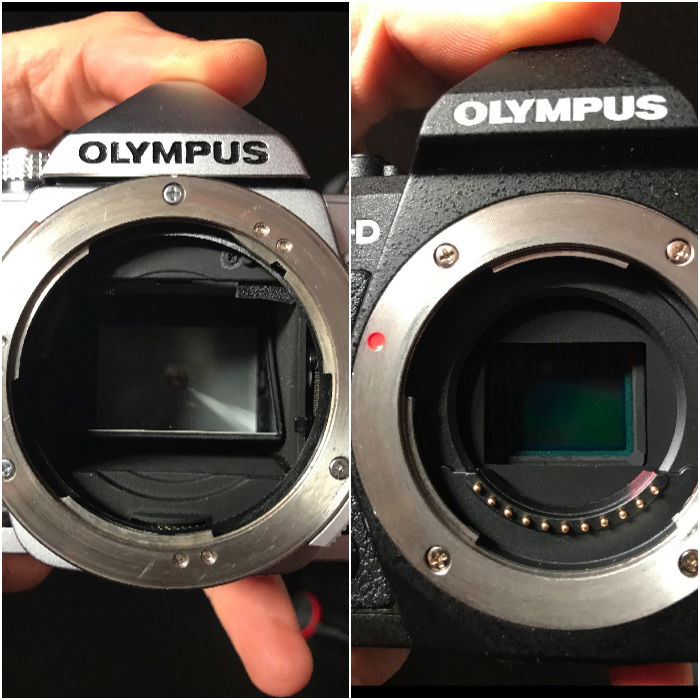
A pocket-size disclaimer: I am a long fourth dimension mirrorless camera photographer and enthusiast. I retrieve they are the future.
Simply, if you are considering to go downwards the mirrorless camera road, you should know that it's not all roses.
6. Mirrorless Cameras Are Smaller and Lighter Than DSLR: The Size Myth
The mirror (with all the other related parts) is not in that location anymore. This allows the photographic camera body to be smaller and lighter than usual DSLR bodies.
This is particularly expert for pro-graded gear.
The Myth
A mirrorless camera is the perfect camera to bring everywhere. They are small and light.
If portability is something you value, you lot should buy i of these cameras over archetype DSLR ones.
And At present the Truth
This is historically accurate. The start mirrorless were Panasonic and Olympus cameras. They had no electronic viewfinder (or it was optional).
They also sported a micro four thirds, MFT, sensor. This is half the size of a total frame sensors.
Simply what about today'south mirrorless cameras?
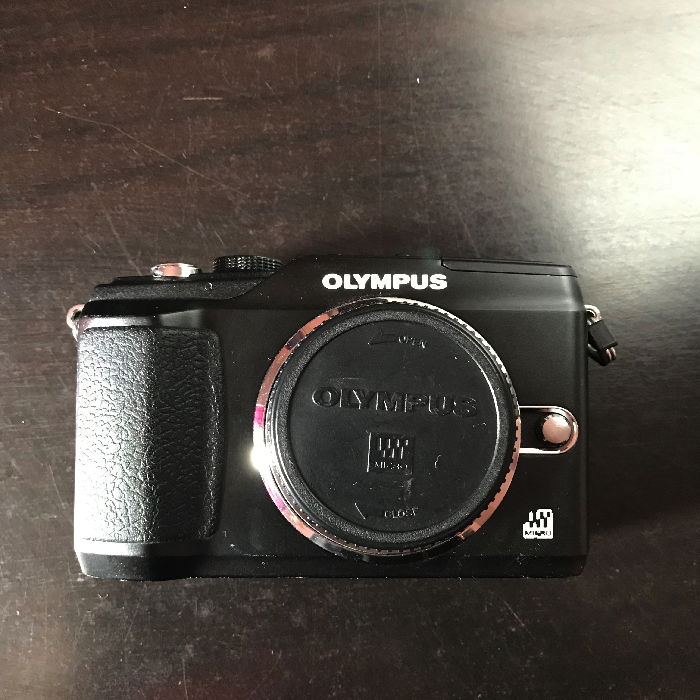
Olympus is still working with the MFT format.
Other competitors like Fujitsu, Sony, Pentax, Nikon and Catechism? They're using APS-C and total frame sensors instead.
But the size of a full frame sensor should not change the size of the camera body in a significant manner, right?
True, but these cameras are ILC cameras. This stands for Interchangeable Lens Cameras.
The size of a lens determines the amount of sensor that is illuminated. This ways it affects the size of the image the lens projects on the sensor.
Very compact and lightweight interchangeable lenses tin illuminate MFT sensors.
But for full frame sensors? They demand lenses that are as big as those used by DSLR full frame cameras.
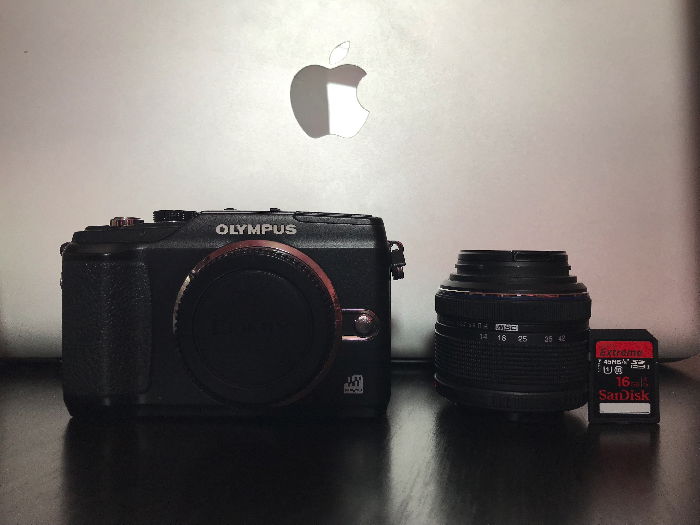
An there's another drawback. The photographic camera torso is prissy and small-scale. This means that the camera-lens system is unbalanced on the lens side.
This is tiring and annoying when photographing handheld with big lenses.
If you need an adapter, things get even worst. The heavy lens, in fact, volition be pushed further in front the camera body. This will make an already unbalanced system worse.
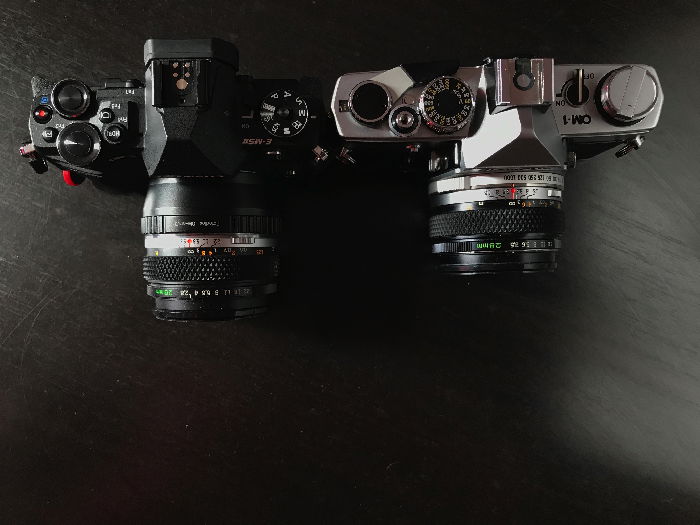
This also reduces the portability of a full frame mirrorless system. What you gain is only on the size and weight of the photographic camera torso merely.
Just to brand things more than ergonomic, the bodies are often not made every bit modest as they could be.
Dedicated accessories even be to make the body larger and easier to hold.
Beneath is a comparing between the Olympus OM-D EM-5 Mk ii and the EPL-2. You tin see them with and without the accessory power grip for the OM-D.

Removable battery grips are an interesting solution. Information technology allows the camera to stay small when paired with small and lightweight lenses.
And ergonomics are improved when using heavy and long lenses.
Verdict
As you see the Size & Weight argument is not a particularly good one. Peculiarly if you care about portability.
If this is your case, endeavour a high stop span camera such as the one from the Sony RX10 family. Add a fast superzoom lens and it can be a improve solution.
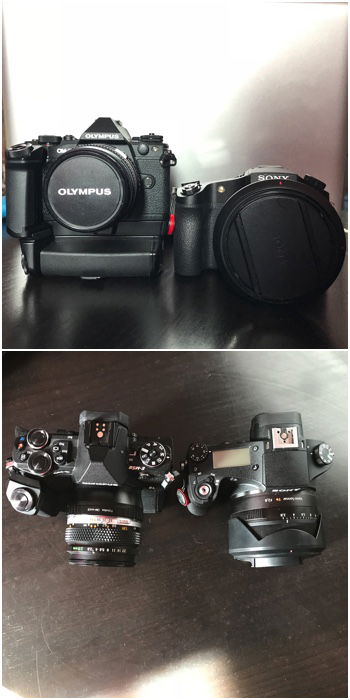
5. Mirrorless Cameras Are WYSIWYG Cameras
Mirrorless cameras accept a much stronger reward over DSLR. They are What You See Is What You Get kind of cameras. And this will brand you lot better faster every bit a photographer.
How? They always use the electronic viewfinder (or live view) to testify you what the mirrorless digital camera sees. And the furnishings of changing camera settings (shutter speed, aperture, ISO). You see these in existent time.
The video below shows the effects of irresolute the shutter speed in real time.
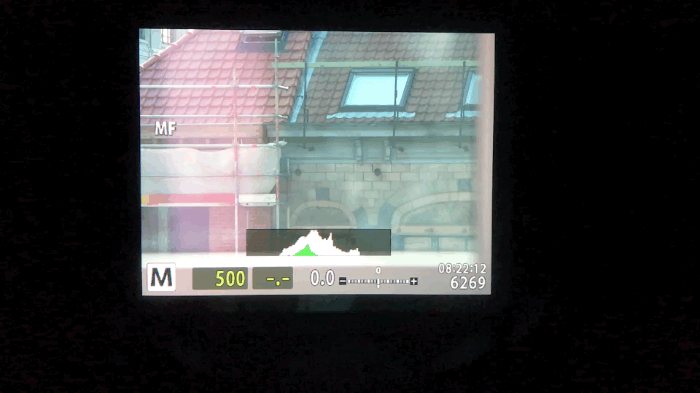
This will help you understand the exposure triangle, aperture, shutter speed, etc.
Information technology will also brand information technology easier to work in manual mode, peculiarly for photography beginners.
Some other benefit is that it will aid you lot to transmission focus in the dark. Especially if you are trying some astrophotography, nighttime or interior photography.
Overexpose the image to brighten the scene plenty that it will exist easy to focus. Then return to the proper settings for taking the photograph.
4. Mirrorless Don't Suffer From Lite Leakage During Long Exposures In Daylight
If yous have an optical viewfinder, light can enter your photographic camera from information technology.
In the photo beneath, the prototype you see on the mirror is coming from what the viewfinder sees.
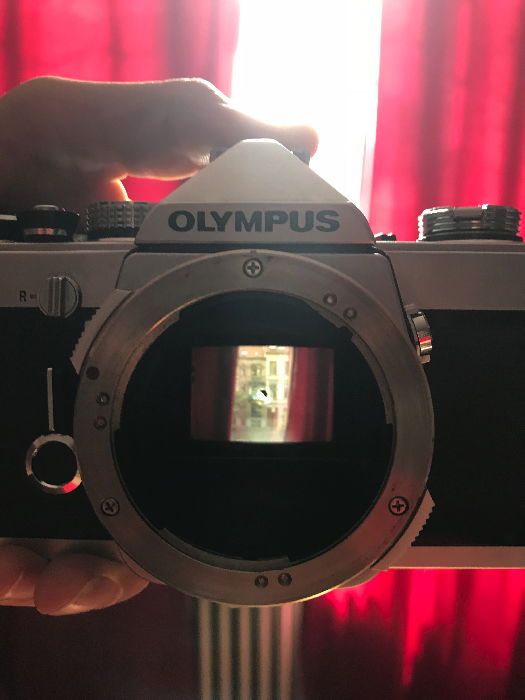
Calorie-free leakage from the viewfinder is not usually a problem. But if yous're doing long exposures, you should cover information technology. Your eye volition not cake it and calorie-free tin can creep into the trunk ruining your epitome.
If y'all look at that strap that came with your camera, y'all will detect a small black piece of soft rubber. That is what your photographic camera maker wants y'all to use to shut the viewfinder during long exposures.
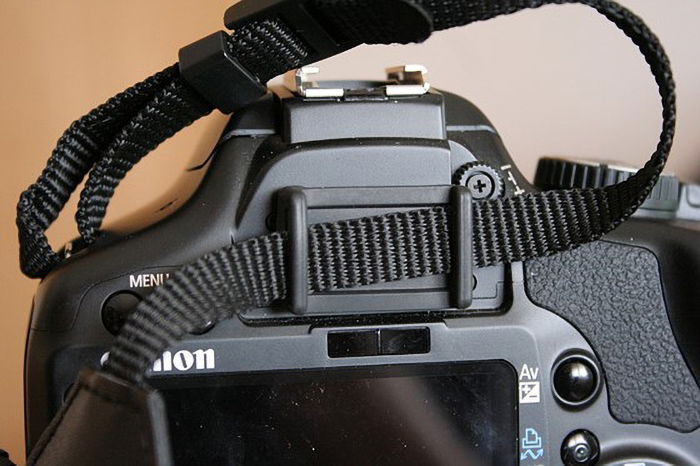
Since mirrorless cameras accept no optical viewfinder, y'all don't have to call up this. And you can't exercise anything fifty-fifty under harsh midday sun(and I practice infrared photography with a mirrorless…)
3. Bombardment Life Is Poor With Mirrorless Camera: The False Power Problem
Mirrorless cameras drain their batteries faster than DSLRs. Even if the rear LCD is OFF, it uses free energy to power the electronic viewfinder.
On boilerplate, bombardment life for entry level mirrorless cameras is nearly 300 shots. The loftier finish photographic camera Sony a7 iii reaches an astonishing 700 shots.
Entry level DSLRs too let you lot to take effectually 400 shots with a charged bombardment. Up to 1000 shots for the pro models (e.g., Canon 80D).
People seem to brand a large bargain out of that. To me, this is a fake problem.
How many of usa shoot more than 300 images without the possibility to supplant the battery with a spare ane? Practice we demand to shoot 900 photo with a unmarried battery?
Also, as I said before, power grips are available for many high end mirrorless cameras. These allow y'all to use 2 batteries at the same time.
I practice astrophotography with my Olympus OM-D EM-5 Mk 2. I am out there at night, in the cold and/or humid conditions.
Fifty-fifty when I'chiliad taking 200+ images of the starry sky, I never run out of battery. Even without using the ability grip.
ii. Mirrorless Accept Fewer Accessories Than DSLR
That may be true, at least for MFT mirrorless cameras. Third party lenses are scarcer than in the DSLR world. There are just some from Sigma (3 lenses), Tamron (1 lens) and Samyang/Rokinon (>three lenses).
Lens adaptors are ordinarily available to arrange lenses with a different lens mount. You can pair mirrorless cameras from Canon and Nikon with existing DSLR lenses.
There may also be fewer models of flashes and remote shutters than those bachelor for DSLR.
Once once again, though, this is something of a false trouble. Makers of camera accessories follow the market. And the mirrorless market is growing by the infinitesimal.
They will commencement building defended accessories and lenses before long.
1. Pros Don't Use Mirrorless Cameras: The Quality Myth
This is the most common argument against mirrorless cameras. Professional photographers are however using DSLR.
That'south not true. There are many world-renowned photographers who take switched to mirrorless.
Ane of the first to do and so was travel photographer Trey Ratcliff.
Other notable photographers include Andy Mumford and Phil Norton.
Image quality, today, is all about the lens and sensor (and electronics) combination. The mirror has no role in that. If you desire to requite the mirror a role, it'south the bad guy slapping around and blurring your long exposures.
There are many pro graded lenses out there for mirrorless cameras, and then image quality is not an outcome.
In that location are two very applied, reasons why most pros are still using DSLR cameras:
- They have spent a footling fortune on photography equipment. Switching is expensive;
- People tend to associate small cameras with amateurs. And big, bulky DSLR with big lenses with professionals. If you are a hymeneals lensman with a small Olympus PEN-F, you volition not attract many customers. And those y'all will get will requite you weird looks.
Conclusion
If y'all are in the market place for a new camera and yous are interested to go mirrorless, hither is what you should know:
- Mirrorless are not always the pocket-size and lite packet people say. The most compact ones are MFT mirrorless cameras. Their smaller sensor tin can exist illuminated with small, meaty, lenses;
- A mirrorless camera can make you lot become a amend photographer. You volition be able to see the effect of your settings in real time;
- Yes, mirrorless has shorter battery life than DSLR. But do y'all really need continuous shooting of more than 300 photos without changing the battery?
- At that place is a larger number of camera accessories and 3rd political party camera lenses for DSLR than for mirrorless. Simply the state of affairs is irresolute equally the mirrorless photographic camera gains more and more market share;
- Epitome quality is on par with that of DSLR cameras. Many pro photographers (particularly travel and landscape photographers) have completely switched to mirrorless camera systems.
For more than great information, check out our great guide to the different types of digital cameras.
Source: https://expertphotography.com/mirrorless-cameras/
Posted by: nelsonhoughle96.blogspot.com

0 Response to "Should I Buy A Mirrorless Camera Or Dslr"
Post a Comment